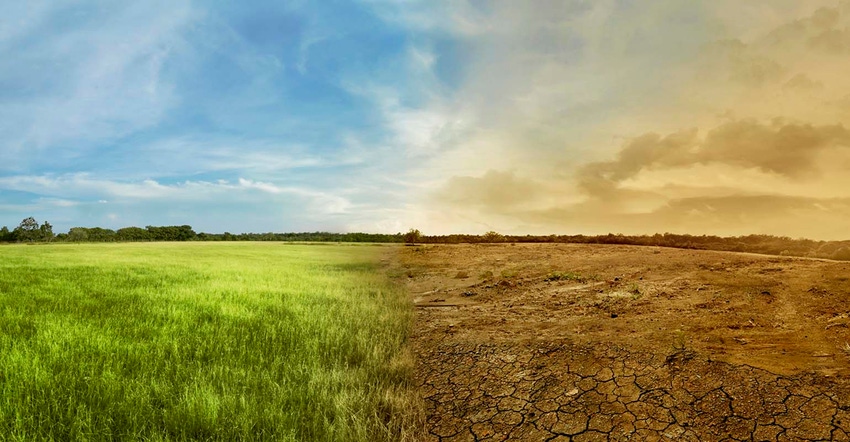USDA ERS report examines impact of climate change on cost of federal farm safety net programs
July 25, 2019

A new study from USDA’s Economic Research Service explores how climate change may impact the cost of the Federal Crop Insurance Program.
The report, Climate Change and Agricultural Risk Management Into the 21st Century, uses statistical, geophysical and economic models to explore how climate change could affect future costs of farm safety net programs. The cost of the Federal Crop Insurance Program, Agriculture Risk Coverage, Price Loss Coverage and other programs have cost an average of $12 billion annually over the past decade, according to the report. The federal government’s cost exposure is expected to increase as weather averages and extremes change over the coming decades.
Analysis was conducted for three different pathways:
The direct impact of climate on yield risk
The indirect effect of yield risk on price risk
The impact of changed average yield, production, and price on the total value insured
What did the study find?
Changes to total liabilities are more influential than price volatility and yield volatility on the cost of the Federal Crop Insurance Program’s premium subsidies, though all were found to be significant.
All climate change scenarios considered suggest that climate change will lower domestic production of corn, soybeans and wheat relative to a future scenario with climate identical to that of the past three decades. All else equal, this implies that prices would be higher than they would otherwise, which implies higher premiums and higher subsidies.
Yield volatility increases under most (but not all) climate scenarios and crops, increasing the frequency and/or depth of losses, and thus increasing premiums and subsidies. On the other hand, changes to price volatility differ by crop and scenario.
Much depends on the severity of future warming. This study compares two scenarios representing differing future rates of greenhouse gas emissions and, consequently, differing severities of climate change. Under the moderate emissions scenario, the cost of today’s Federal Crop Insurance Program would be about 3.5% higher than under a future with a climate similar to that of the recent past. Under the higher emissions scenario, this cost increase is 22%.
Source: USDA ERS, which is solely responsible for the information provided and is wholly owned by the source. Informa Business Media and all its subsidiaries are not responsible for any of the content contained in this information asset.
You May Also Like

.png?width=300&auto=webp&quality=80&disable=upscale)
.png?width=300&auto=webp&quality=80&disable=upscale)
